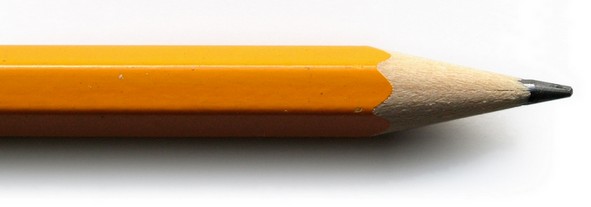Most of us pick up pencils and lose them without giving it a second thought. Pencils are a bit more interesting than you might, think, though.
Mental Floss answers a few not-so-frequently asked questions about everyone’s second-favorite writing implements, including when pencil sharpeners were illegal.
What makes #2 pencils so special?
They’re the absolute middle of the road when it comes to pencils. While we number our various grades of pencils in the U.S., the rest of the world uses a system of numbers and letters to describe how hard and how black a pencil’s lead is. An American #2 pencil (roughly) corresponds to an HB pencil on the rest of the world’s scale. The lead is not too dark and not too light, and it’s not too hard or too soft.
If the rest of the world uses a system of numbers and letters to grade pencils, why do we use just numbers?
Before he wrote about civil disobedience and spent his time at Walden Pond, Henry David Thoreau worked at the family pencil company. Thoreau perfected a process of using clay as a binder to make the soft, loose graphite hard and suitable for pencils. Suddenly the New England graphite could be used to make a pencil that didn’t leave giant smears, and the Thoreaus’ business took off. By the middle of the 19th century, the Thoreaus were selling pencils with varying graphite hardness, which they numbered 1 through 4.
Why are pencils painted yellow?
According to most stories, our pencils are yellow as a result of a clever marketing gimmick. In 1889 the Hardtmuth Company of Austria introduced a fancy new line of pencils at the World’s Fair in Paris. The pencils were named Koh-i-Noor after a famed Indian diamond, and they contained the world’s finest graphite from the Far East. They were also painted yellow, which was unusual at the time.
Some historians claim that the Austrian company painted their pencils yellow as a subtle nod to the yellow on the flag of Austria-Hungary. Others claim the yellow was an even subtler nod to the Far Eastern graphite in the pencils; the color yellow is associated with royalty in China.
When was it illegal to own a pencil sharpener?
If you owned a pencil sharpener in early 20th century Britain, you had a hot little piece of contraband. At the time, the supplies of the red cedar that had historically been used in pencils was getting perilously low, so the government briefly outlawed pencil sharpeners in order to limit waste from overzealous sharpening.
Photo by Fantazia.
